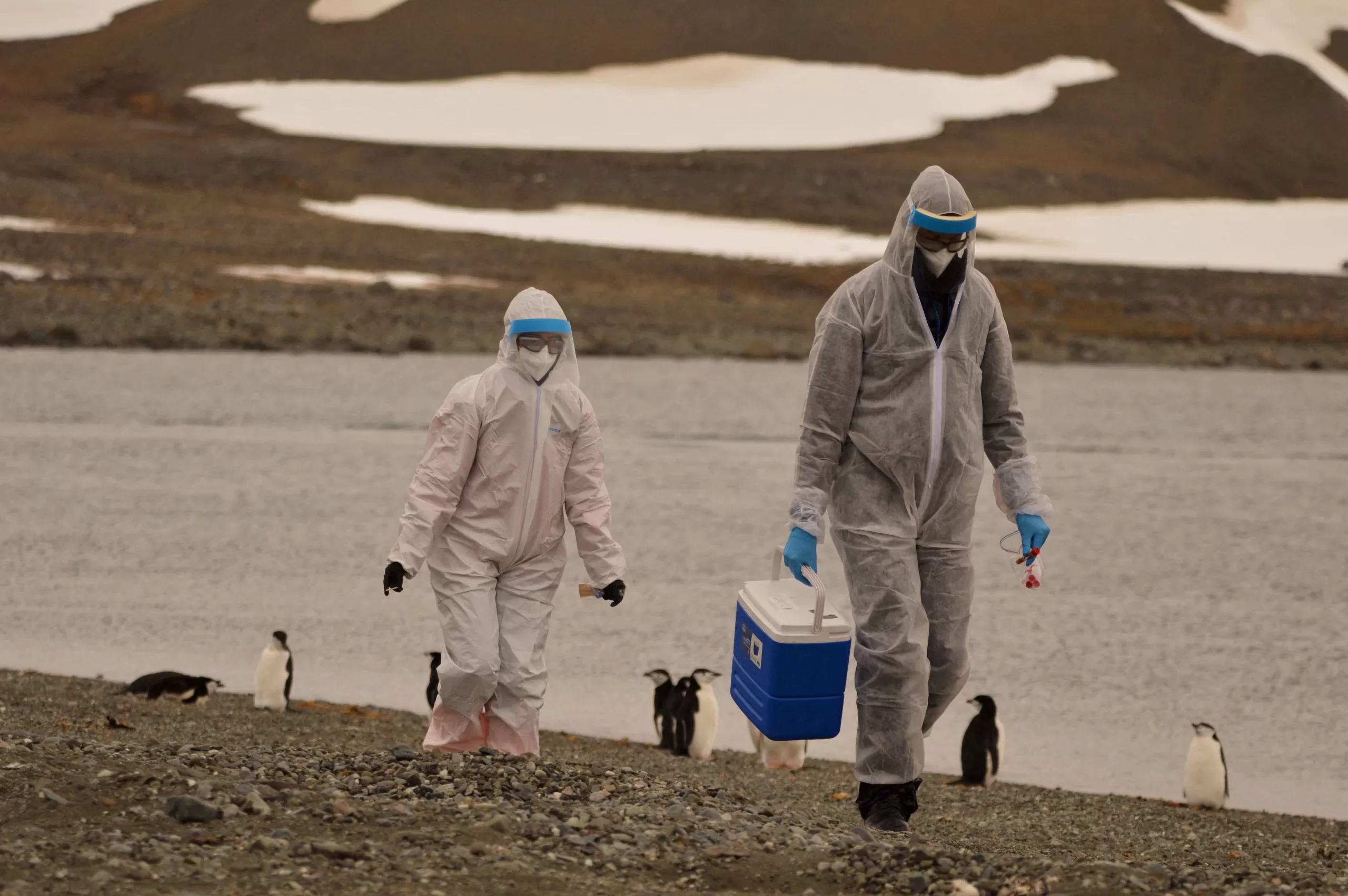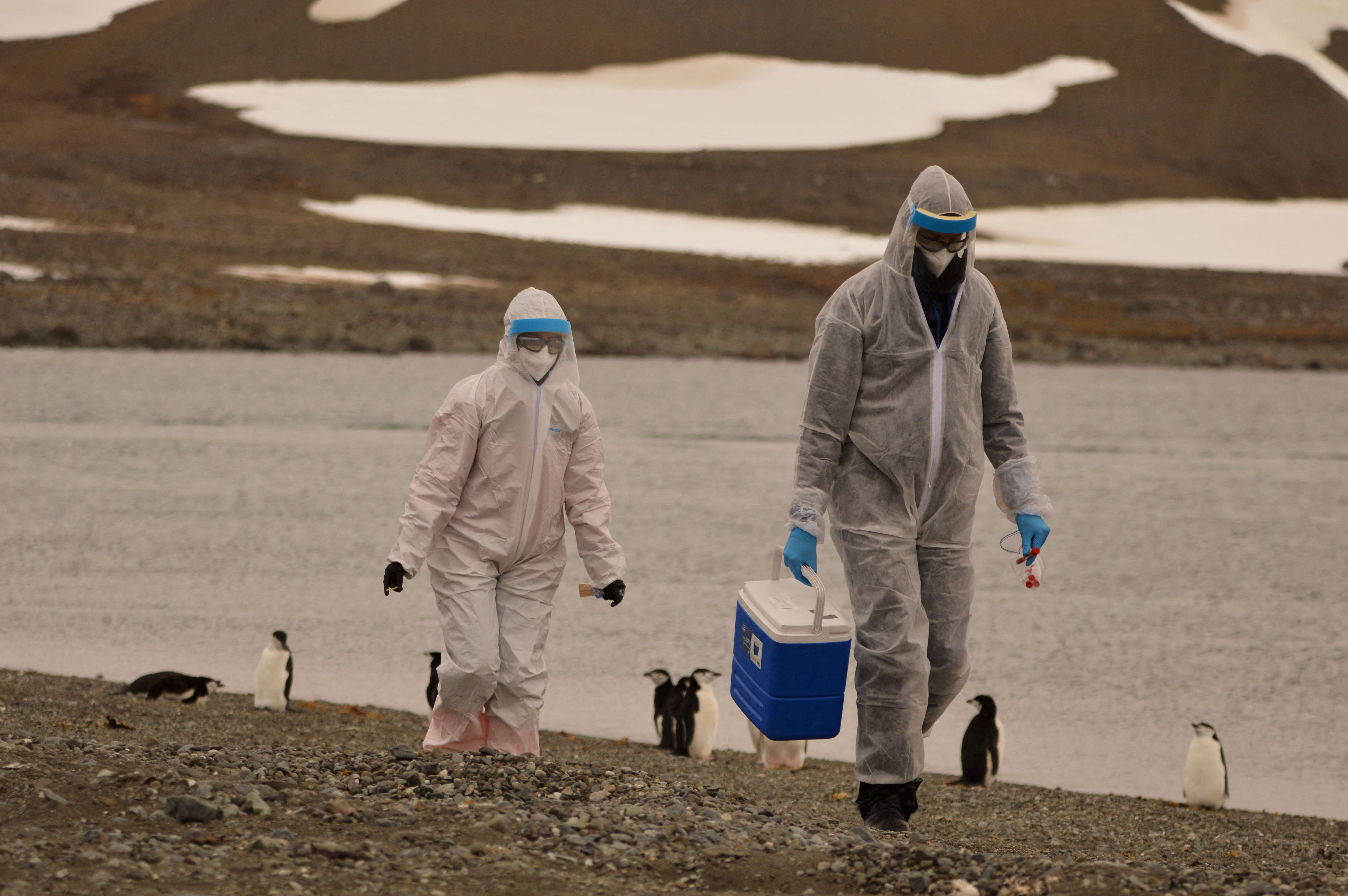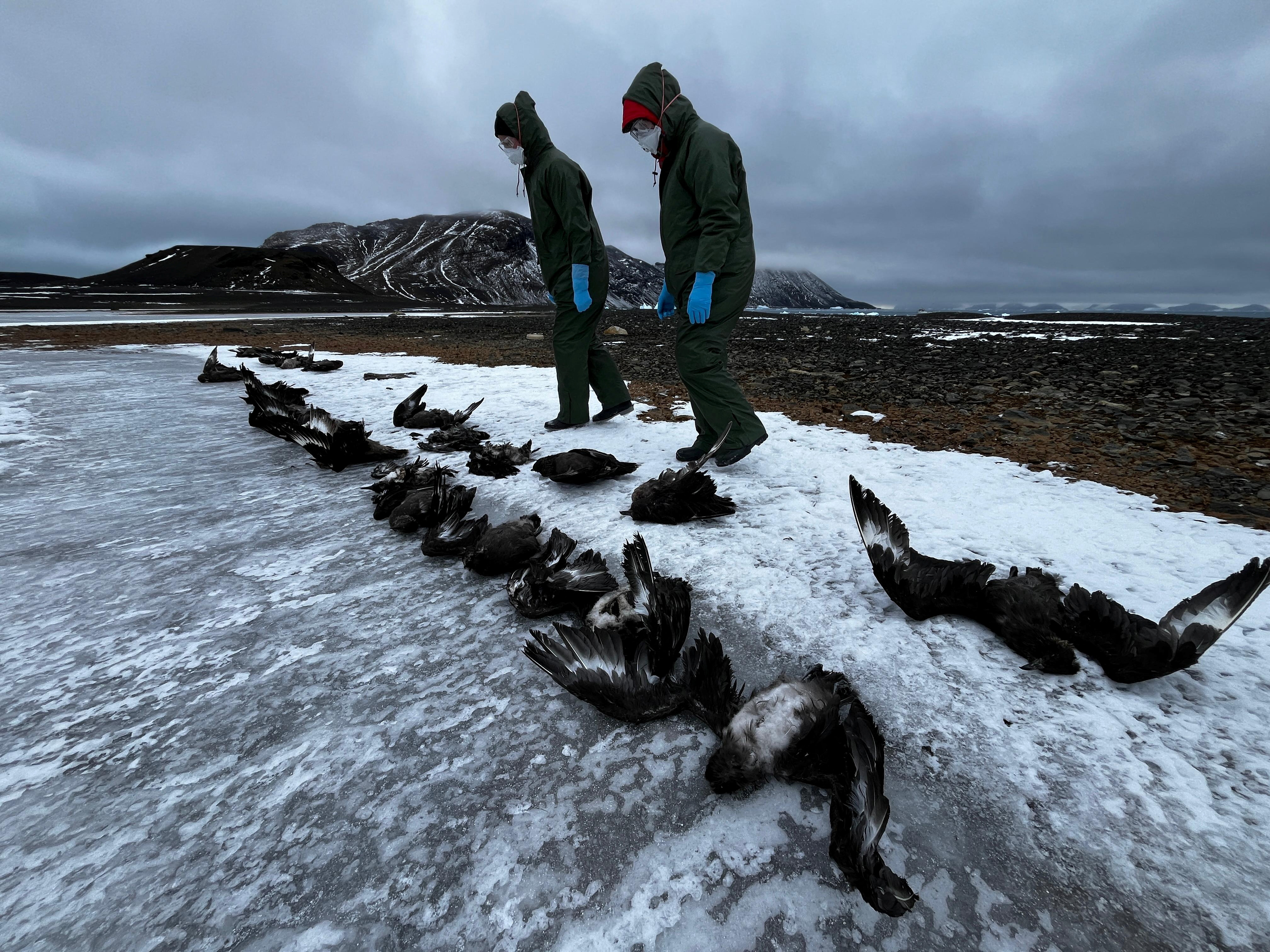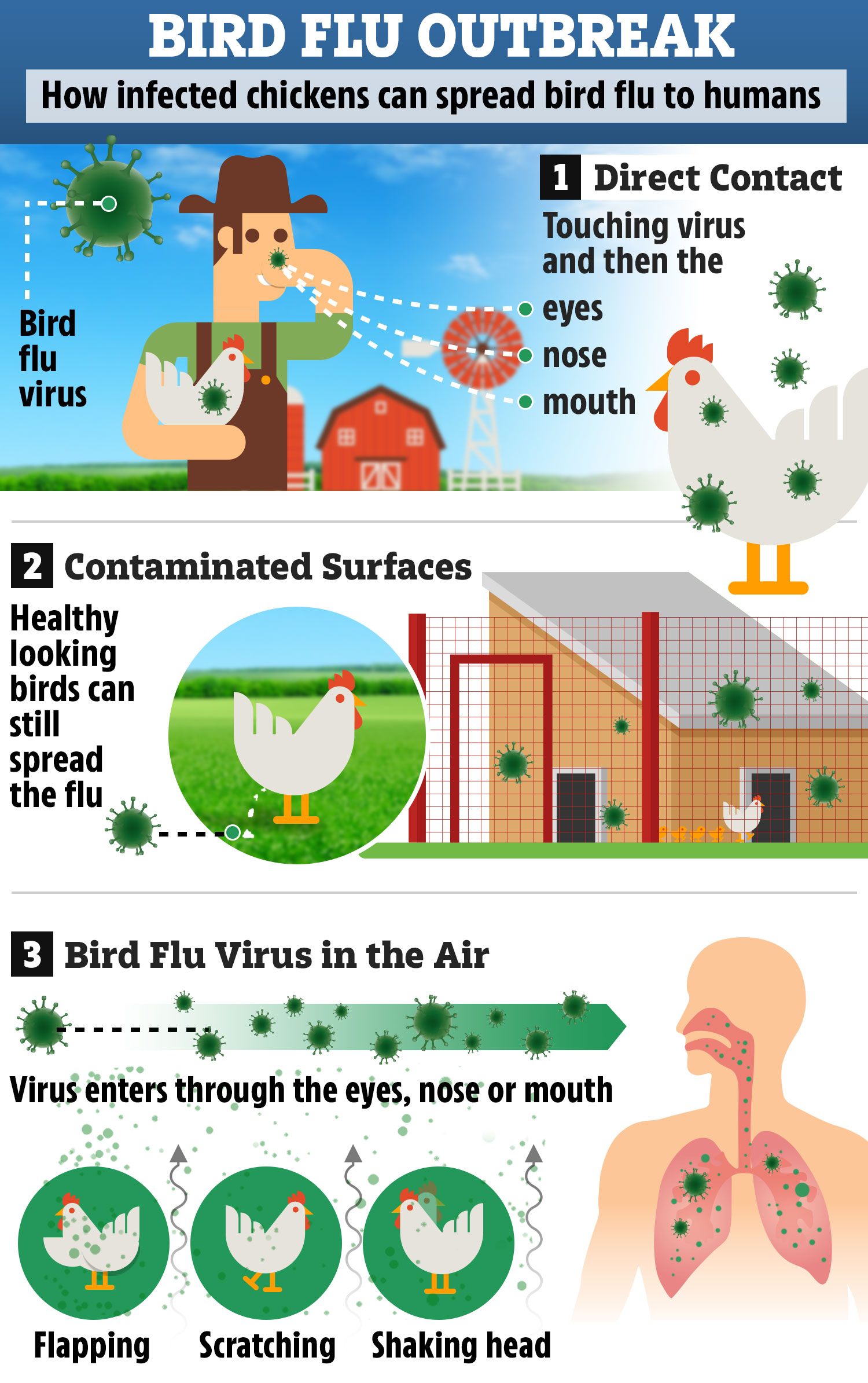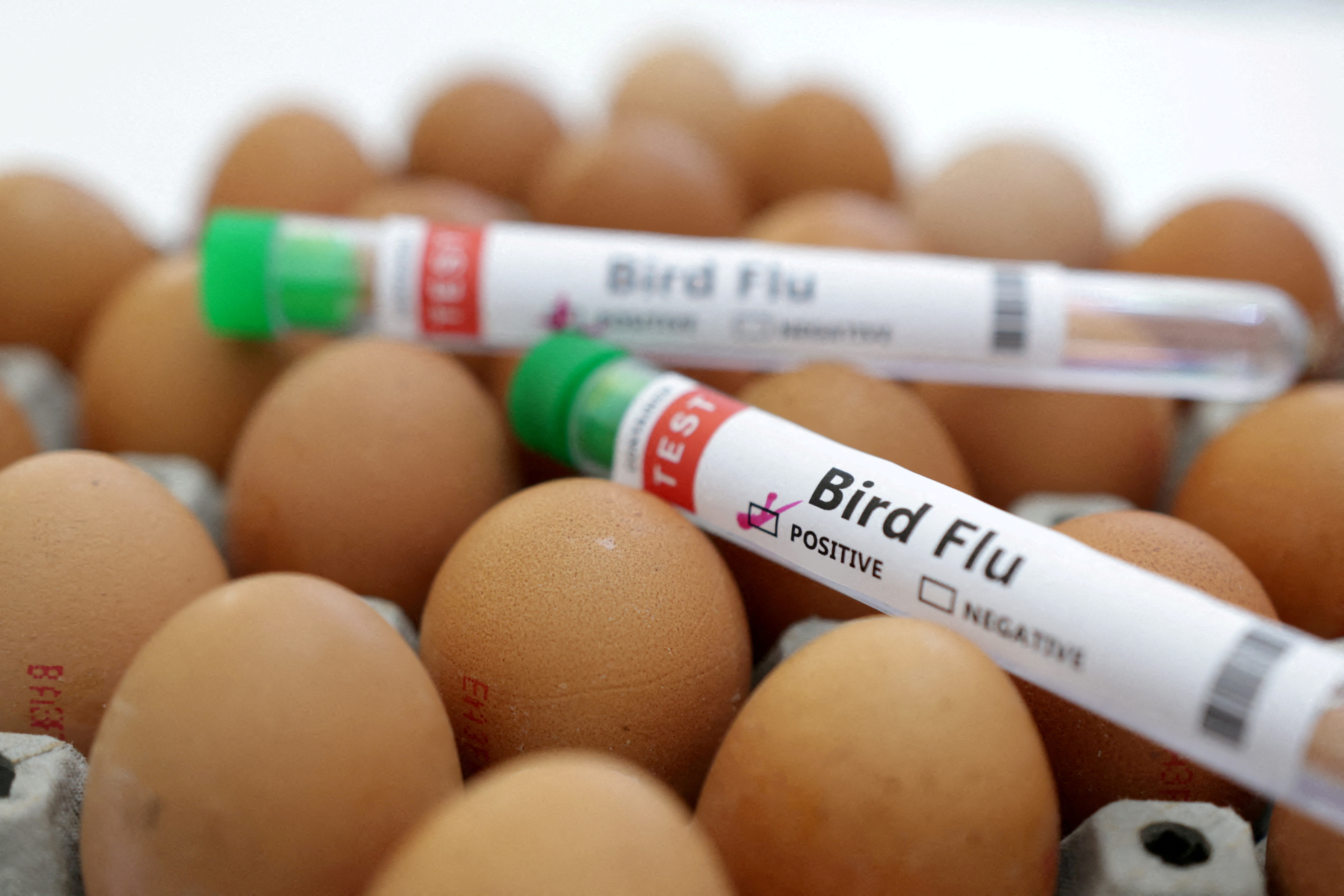Fears are beginning to spread as WHO warns there could be “extraordinarily high death rates” if the disease gets out of control.
Bird flu is extremely deadly and has caused huge declines in bird populations after it came to Europe in 2020.
The outbreak has been devastating for the poultry industry and millions of birds have been culled.
The virus has now made an alarming jump to mammals such as cows, cats, seals and now people which raises the likelihood of it becoming more transmittable.
While there is no evidence of human-to-human transmission, scientists have warned it would be much more deadly than Covid.
Experts at the WHO said humans will face an “extraordinarily high” mortality rate if the strain were to take hold.
Currently more than half of those infected die.
Jeremy Farrar, the UN health agency’s chief scientist, said: “This remains I think an enormous concern”.
He added: “The great concern of course is that in… infecting ducks and chickens and then increasingly mammals, that virus now evolves and develops the ability to infect humans and then critically the ability to go from human to human.”
He continued: “When you come into the mammalian population, then you’re getting closer to humans… this virus is just looking for new, novel hosts.
“It’s a real concern.”
According to the Animal and Plant Health inspection Service since February 2022 the virus has lead to 82 million farm birds being culled.
There is so far no evidence that It is spreading between humans.
But its evolution to infect more species, is what is most worrying to scientists.
Official data shows between 2003 and April 1, 2024, there have been 463 deaths recorded from 889 human cases across 23 countries.
This puts the case fatality rate at 52 per cent.
US authorities earlier this month said a person in Texas was recovering from bird flu after being exposed to dairy cattle.
It was only the second case of a human testing positive for bird flu in the country and came after the virus struck herds that were reportedly exposed to wild birds in Texas, Kansas and other states.
It also appears to have been the first human infection with the influenza A virus strain through contact with an infected mammal, WHO said.
Sir Jeremy Farrar said greater monitoring is needed to understand how human infections are happening.
He said: “It’s a tragic thing to say, but if I get infected with H5N1 and I die, that’s the end of it.
“If I go around the community and I spread it to somebody else then you start the cycle.”
A report from the Rare Breeds Survival Trust (RBST) warned this week warned all of the UK’s native breeds of chicken, duck, geese and turkey, are under threat because of bird flu.
Efforts are underway to develop vaccines and therapeutics for H5N1 should the situation escalate.
But Sir Jeremy stressed regional and national health authorities globally need capacity to diagnose the virus to ensure the world is “in a position to immediately respond”.
The last outbreak of bird flu in the UK saw not only poultry farmers suffer but also domestic owners who had to shut up their birds for months on end to try and stop the spread.
This lead to many expressing concern for the welfare of their chickens as they reported their birds were becoming restless and stressed.
It comes as thousands of penguins are thought to have been killed by a deadly outbreak of bird flu stoking fears of an “Antarctic Plague”.
The H5N1 strain could even be “dangerously close” to triggering another pandemic, experts have warned.
And a student in Vietnam died of bird flu just days after noticing a new cough.
The 21-year-old tested positive for the highly pathogenic avian influenza strain H5N1, which has already been found in the UK and the US.
The symptoms of bird flu
THE main symptoms of bird flu can appear very quickly.
- A very high temperature or feeling hot or shivery
- Aching muscles
- Headache
- A cough or shortness of breath
Other early symptoms may include:
- Diarrhoea
- Sickness
- Stomach pain
- Chest pain
- Bleeding from the nose and gums
- Conjunctivitis
